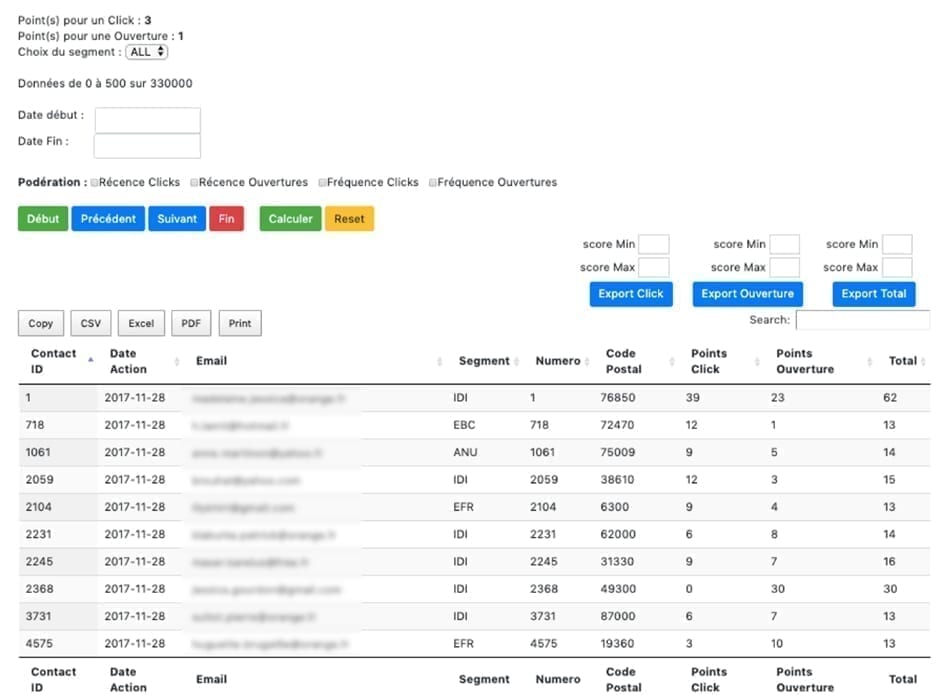Photo by Finn Hackshaw on Unsplash
- "What do you think about chasing up non-openers?"
- "Mm...You mean a follow-up on openers, don't you?"
- "Well no, this would mean routing my email to a target far too small."
This is a conversation we often have with our clients, and we always take the time to explain our point of view on this matter.
Why sending a follow-up email?
This question usually hints at a conversion goal. Because the click-through rate isn't high enough to bring about a good amount of conversions, your first move is to send a follow-up campaign to raise the number of conversions.
But who to chase up?
Your second thought is probably the following: "I need volume. The more emails contacts I can get, the best click-through rate I'm likely to get". This is where we disagree... So, who should you chase up: non-openers, non-clickers openers or clickers?
Our belief is: "Who opened, will open", "Who clicked, will click"
We know from experience that even if clickers represent the lowest volume, they also represent the most effective target. You'll get excellent opening rates, click-through rates, dissatisfaction rates and conversion rates.
We asked one of our clients to try out his follow-up campaign on the 3 targets (non-openers, non-clickers openers and clickers). Here are the results:
| Target | Number of emails sent | Opening rate | Click-through rate | Number of conversions | Conversion rate |
| Non-openers | 7441 | 16,6% | 2,8% | 20 | 0,27% |
| Non-clickers openers | 2740 | 61,6% | 4,5% | 8 | 0,29% |
| Clickers | 422 | 58,8% | 29,3% | 12 | 2,86% |
As you can notice, you get better rates when chasing up a target that strongly showed their interest (the clickers). Of course, I can hear the following: "Alright, non-clickers openers and clickers are the most effective targets in terms of rates. But if you look at the number of conversions, you can observe that a few non-openers contacts buy too, and I can't do without those conversions".
Yes, we get that.
Need help?
Reading content isn't everything. The best way is to talk to us.
But keep in mind the following:
As far as emailing is concerned, you always need to convince 2 targets: your final customers, but also the ISP/webmails beforehand. The more you target those who already showed an interest (your openers and your clickers), the more probable it is that you'll be in ISP/webmails' good books (this means your reputation will be good), and the more your emails are likely to land in the inbox instead of being blocked. So, chasing non-openers up amounts to taking the risk to over-solicit internet users and cause dissatisfaction.
Here is some good practice for your follow-up campaigns:
- Don't send a follow-up each time, choose your key campaigns.
- If you're already borderline with ISP/webmails, don't chase non-openers up.
- If you're not borderline with ISP/webmails, be careful... One time can be enough!
- At the minimum, change the subject of your message as well as the main title; try to find a catchy approach.
- Performance is better when you plan a short interval between the 2 emails (Day+1 or Day+2).
How about implementing an automatic follow-up scenario?
In this case, you can use a tracking tag on your landing page. Most of marketing campaigns management tools allow you to generate a tracking tag that you insert within your landing page HTML code. This is a good way to implement a retargeting scenario for the "landing page visitors who clicked at least once" or the "landing page visitors who stayed more than 8 seconds."
How about targeting a more important volume? "Who often opened, will open often"
The idea is to focus on the most engaged contacts, meaning openers and clickers, over a given period - for instance the last 6 months. You calculate the number of openings and click-through and assign a rating to each contact. For instance, 1 point for 1 opening and 2 points for 1 click-through (excluding the unsubscribing link of course!), because clicking-through shows more engagement than just opening. This rating is then weighted according to whether the openings and click-through are recent or not and whether they are regular or not. Indeed, things are different if I clicked once three days ago or if I clicked 10 times three months ago.
The final rating corresponds to the engagement score: it is assigned to each contact and evolves over time. The aim is to identify who's the most engaged to the brand and to focus on those contacts in particular.
If your objective is conversion at all costs, you can also rely on the assertion that "who bought once will buy again", and create a score of truly engaged contacts or a score of buyers, by applying the same principle. Volume will be lower, but the results should be convincing.
Finally, the good news is that Badsender has created a tool that automatically calculates the engagement score. It's not absolutely perfect yet, but the technique is here. Want to try it? Feel free to contact us.

Leave a Reply